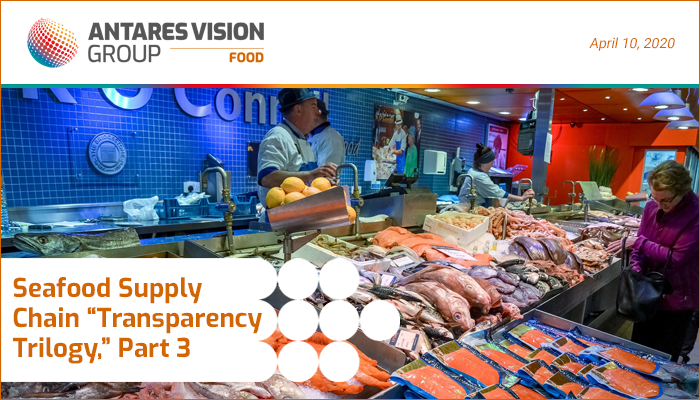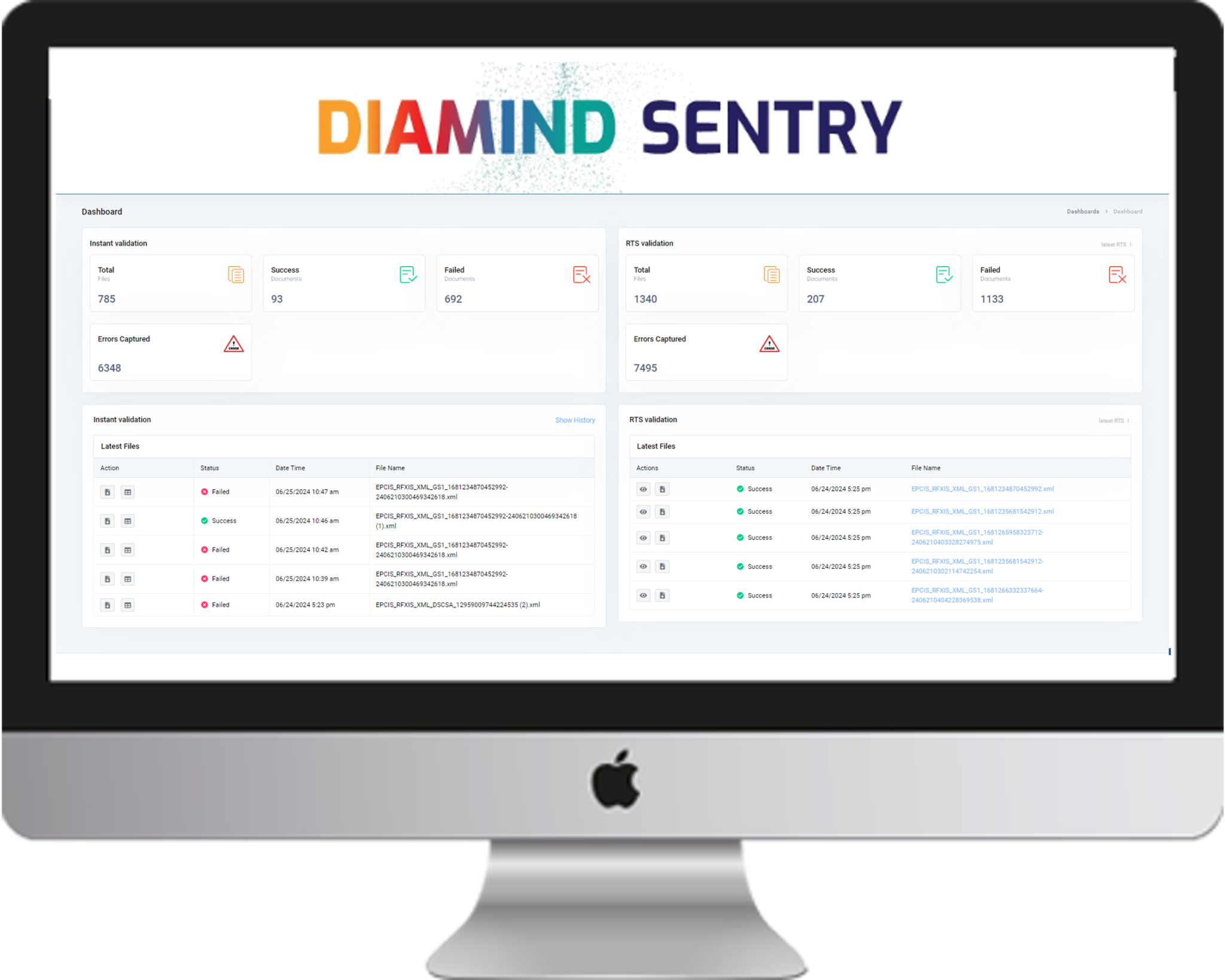This is the last installment of our global seafood supply chain Transparency Trilogy. Thanks for reading!
If you read our first and second blogs about transparency in the global seafood supply chain, you probably feel that the seafood sector needs to change its tune. Sure, industry thought leaders are re-evaluating how they do business and have taken some initial steps to make transparency the norm — that’s what leaders do — but widespread change has yet to come.
The seafood supply chain remains opaque and complex. There are countless opportunities for products to be compromised as they change hands over and over again on their global journey “from catch to plate.” Fish populations continue to be depleted. Trading partners don’t always trust each other, and they certainly don’t always like to share their data (if they have any data at all). And people continue to be exploited and abused on land and sea.
Let’s look at a few of the most pressing problems facing the industry and how transparency can help solve them.
The specter of slavery
Yes, slavery.
In a 2014 blog post, Human Trafficking Search, an international organization that seeks to raise awareness and help prevent and eliminate human trafficking worldwide, wrote, “It is not a new revelation that slavery plagues the global food system.”
So, six years ago, slavery was “not a new revelation.” Alas, more recent headlines confirm the global seafood supply chain has not dealt with this problem:
- March 19, 2020: Who is FCF? Taiwan’s biggest tuna trader linked to forced labour & illegal fishing
- January 29, 2020: The Southeast Asian Fishing Industry and Modern Slavery
- September 21, 2019: “‘Such brutality’: tricked into slavery in the Thai fishing industry”
- June 6, 2019: “Blood and Water: Slavery in the Fishing Industry Revealed”
- May 29, 2019: “‘Slavery’ on the Seas: Forced Labor Widespread in Global Fishing Industry”
If ever there was an argument for change in the global seafood supply chain, this is it. Transparency will combat slavery by shining a light on who is doing the fishing, who is processing and transporting the seafood, etc. We’re all in.
Illegal, unreported, and unregulated (IUU) fishing
UII fishing includes fishing during off-season breeding periods, catching and selling unmanaged fish stocks, and selling fish caught by slaves. It threatens the stability of seafood ecosystems in every body of water where it occurs.
According to the Food and Agriculture Organization of the United Nations (FAO), IUU fishing “remains one of the greatest threats to marine ecosystems due to its potent ability to undermine national and regional efforts to manage fisheries sustainably as well as endeavors to conserve marine biodiversity.”
Furthermore, the FAO reports that IUU fishing accounts for as much as 26 million tons of seafood annually, valued between $10-23 billion. It capitalizes on corrupt governments and exploits weak management systems. In some countries, it has been linked to organized crime. It depletes resources, which can cause local fisheries to collapse. It threatens livelihoods, intensifies poverty, and increases food insecurity.
Transparency helps mitigate UII fishing because it enables buyers and wholesalers to guarantee the provenance of their product. It will help shrink markets for illegally sourced fish, as more trading partners — and consumers — will demand data that proves seafood is from a legal, regulated source and has been reported to the appropriate government agencies.
Food fraud
Food fraud is the illegal practice of substituting one food for another. It’s very dangerous, and it happens around the world, usually when the supply for a commodity fluctuates. To keep an in-demand product flowing to customers, fishermen and restaurateurs can feel pressure to commit seafood fraud, replacing one species for another.
Studies by Oceana, which works to protect and restore the Earth’s oceans, illustrate how pervasive food fraud is. For example, between March and August 2018:
- Twenty-one percent of 449 fish Oceana researchers tested were mislabeled.
- One-third of establishments sold mislabeled seafood.
- Mislabeling was found at 26 percent of restaurants, 24 percent of small markets, and 12 percent of larger chain grocery stores.
- Sea bass and snapper were mislabeled the most.
Transparency fights food fraud by holding all nodes of the seafood supply chain accountable for what they’re selling. Put simply, with transparency, there’s nowhere for unscrupulous actors to hide.
Consumer health and food safety
Without a transparent supply chain, it’s difficult to safeguard consumer health and food safety. Imagine what a widespread foodborne illness outbreak and consequent recalls would look like without supply chain transparency and traceability.
As with the problems we’ve discussed above, the seafood industry isn’t fully part of the solution for consumer health and food safety concerns. Food fraud (species substitution) continues to make people sick and cause death. Mishandled seafood continues to carry high histamine levels, posing health risks to millions of people.
People want to assume they are eating safe, authentic food. Transparency will not only give consumers peace of mind, it will go a long way to build — or rebuild — their sense of trust with the seafood industry. In every aspect, transparency is a win-win for everybody.
Final thoughts about transparency in the global seafood supply chain
To wrap up our transparency trilogy, we want the seafood industry to know that supply chain transparency is within reach and that it doesn’t have to be painful.
Forgive the pun, but the world is the industry’s oyster: Help is available all around you. Government and global initiatives such as the GDST want to work with you to become more sustainable, environmentally friendly, and ethical. Consumers are also ready to help; if you build transparency into your supply chain, they will come.
And rfxcel is with you too, here to answer your questions about achieving transparency in your supply chain. We want you to know you have three options that we call “Keep, Replace, Provide”:
- Keep your current system, but integrate it with new solutions.
- Replace outdated systems with less complicated solutions that, in the long run, do more for less money.
- Look to rfxcel to provide a new supply chain system that closes all the gaps and brings you to full transparency.
Take a look at our signature rfxcel Traceability System (rTS), the most complete and flexible raw materials and finished goods traceability solution for the industry. Check out our rfxcel MobileTraceability app, which can track any batch, movement, and handler at any location, putting the power of a digital supply chain at your fingertips. And our rfxcel Integrated Monitoring (rIM) solution lets supply chain actors see their products in real time and mine rich unit-level data about more than a dozen environmental conditions.
Learn more about these and our other solutions for F&B here and contact us to start a conversation about transparency in your supply chain.





